Tanzania, or rather, the United Republic of Tanzania, was founded in 1964 from the union of the recently independent Tanganika with the Republic of Zanzibar.
As the name Tanzania comes from the merging of Tanganika and Zanzibar, so in the new flag, adopted on 30 June 1964, are present the flag of Tanganika, a black stripe with yellow borders on a green bottom, and the horizontal blue, black and green tricolour of Zanzibar.
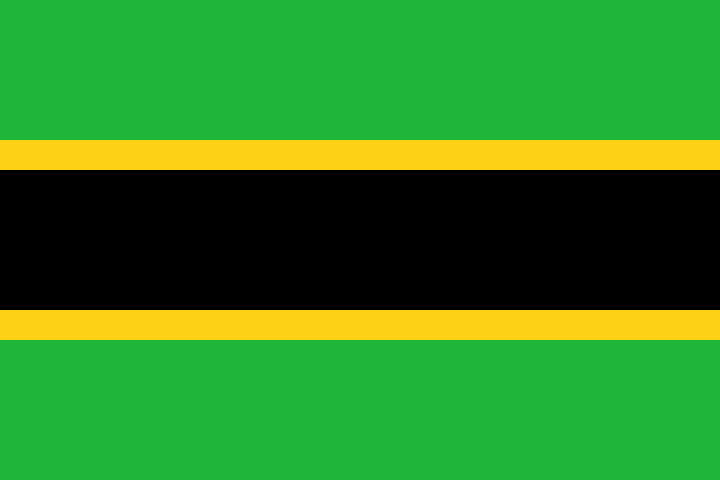
Tanzanian flag has a rectangular form with a 2:3 ratio and it is divided in two triangle from a diagonal stripe that starts from the lower left corner (the shaft side) and goes to the upper right one. The diagonal provision breaks with the horizontal whole of the two previous flags and it wants to explain the equality of the founding states of the new nation.
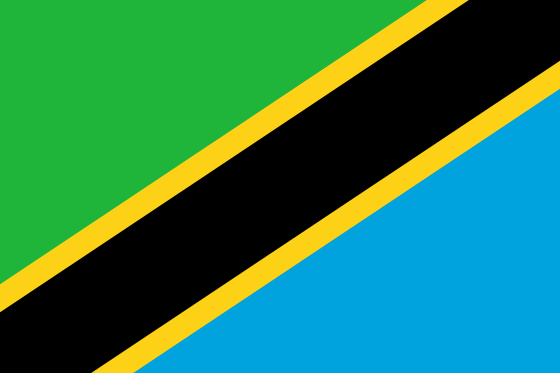
The upper triangle is green, the lower one is blue, the stripe is black with yellow borders. The colours symbolism is very strong: green stands for the vegetation and the agricultural resources of the Country, blue represents the rivers, the Great Lakes and the Indian Ocean, yellow, that is sometimes described as gold, evokes the mineral resources of Tanzania, while black symbolizes the population.
Equipped with an administrative semi-independence status, a president, a parliament, a government, and a constitution, Zanzibar runs independently its internal affairs. In this context and with the pressure of independent movements, Zanzibar decides in 2005 to adopt its own flag.
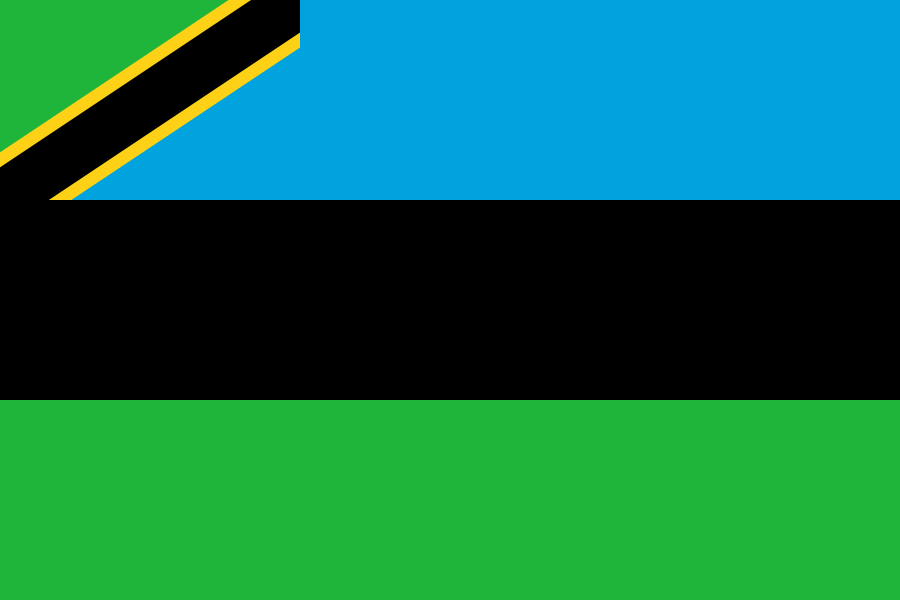
The blue, black and green tricolour is finally reinstated with a new insert of the United Republic of Tanzania’s flag. But the sovereignty of the Union is not called into and the Tanzanian flag is the only one able to wave lawfully in the international requests.
The national flag and its colours come back also to the Country’s emblem where a man and a woman, symbols of equality and cooperation, are represented on the sides of a warrior’s shield.

Each of them hold an elephant tusk and, at their feet, a cloves and a cotton plants grow, that are emblematic Tanzanian cultivations. The shield is divided in four stripes: in the coloured gold upper one, that is referred to the mineral riches of the Country, a flame, symbol of freedom, illumination and knowledge is represented; the second stripe corresponds to the flag; in the third, red, are designed an axe and a hoe, symbols of the fertility of ground and work; finally, the white and blue lower one symbolizes the ground, the coasts and the waters of the Great Lakes and the Indian Ocean. The lance that raises from the bottom up of the shield represents the freedom defence. Under there is the representation of Kilimanjaro and the nation motto: Uhuru na Umoja, “Freedom and Unity”.

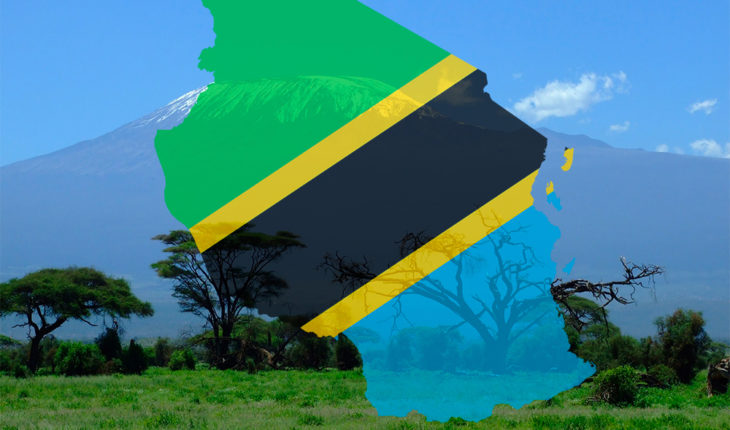



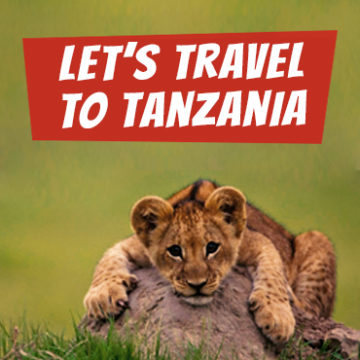



thanks for informations.